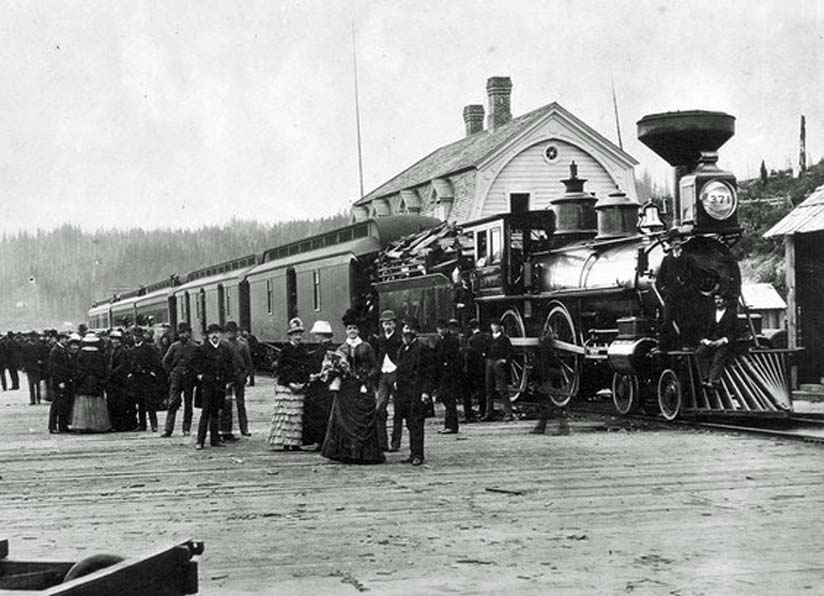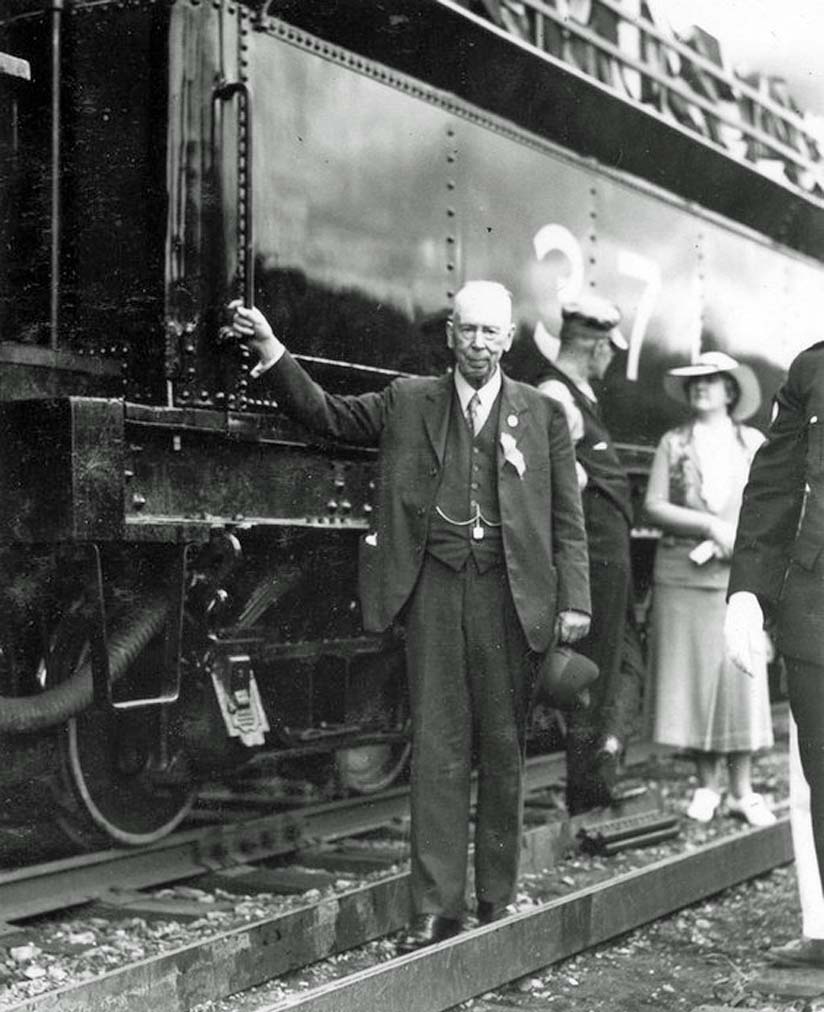
Port Moody British Columbia - The first trans-continental passenger train from Montreal to Vancouver arrived at the Canadian Pacific
Railway (CP) terminus in Coal Harbour on 23 May 1887.
But the first trans-continental passenger train from Montreal to Burrard Inlet had arrived in Port Moody almost a year earlier, on 4 Jul 1886.
The Victoria Daily Times reported the CP train pulled into the Port Moody station at "exactly one minute past noon," which it dubbed "the most
wonderful feat in railroading on record."
"The train left Montreal on time, and after a run of close upon a week, covering a distance of 2,907 miles, it draws up at the end of its long journey
only one minute behind its schedule time," said the Times.
"The time card showed the hours covering the trip to be 136 hours and one minute."
There were 150 passengers on board the train, which the Times reported "consisted of engine, tender, baggage car, express and mail car, two emigrant
sleepers, one first-class, one Pullman, and Mr. Abbott's official car."
Mr. Abbott was Harry Abbott, the general superintendent of CP in British Columbia.
Abbott was greeted by dignitaries such as B.C. Premier William Smithe, who sailed over from Victoria on board the S.S. Yosemite.
"On entering English Bay, the decks were crowded with people anxious to take in the situation of that famous harbour, believed to be the future great
shipping port of the Pacific Coast," said the Times.
"A rush was made for shore to examine the remains of the recent conflagration (the Great Fire of 13 Jun 1886).
The time here was limited, and only a portion of the ruins examined.
"A considerable accession was made to our number at Vancouver as well as Moodyville, where a short stop was made. The sail up the Inlet now became very
interesting, the scenery on either side being very grand. The grading for the railway track is quite distinct. From the cars, a charming view will be obtained
of the opposite side of the Inlet which excels either the Hudson River scenery, generally considered to be the Rhine of America, or that of the Columbia River
between the Dalles and Portland."
 To be fair to the Columbia River that's surely an overstatement.
To be fair to the Columbia River that's surely an overstatement.Premier Smithe gave the first of several addresses, stating the arrival of the train linking Canada, "will be regarded for all time to come as the
real beginning of the country's industrial and commercial development."
Vancouver Mayor Malcolm MacLean admitted, "it has been our misfortune to have been severely tried by a devastating conflagration, which in the course of a
few hours, swept away our city."
But he told Abbott and the assembled multitude, "such is the energy and enterprise displayed by our citizens, and so strong was their faith in the future
of our city, that already a new city more extensive and attractive than the old has risen from the ashes."

The engineer who drove the engine into Port Moody was W.H. Evans, who was known as Billy.
His great-great nephew Peter Gordon recently emailed me after a column about Alan Morley's Romance of Vancouver series, which is where the idea for this column
came from.
The Sun's James Dyer interviewed Evans on 29 Feb 1936.
Evans arrived in B.C. in 1883, "going via New Westminster to Yale, to take part in the construction of the railway."
Evans told Dyer that Port Moody "is still the terminus, officially. They merely built a branch line into Vancouver, and it is a only a branch line
still."
He also told Dyer that on a hot July day in 1890, the city nearly suffered a second catastrophic fire.
The forest surrounding the fledgling city was "tinder dry," and a stiff wind ignited a series of small fires into "devouring
hosts."
The CP decided to move its cars and coaches away from the danger.
Evans hitched a locomotive up and started east, and "at every crossing men stopped me and piled their wives and children, their valuables, into the
cars."
But the wind "died at sunset," and Vancouver survived.
Evans was at the helm of an engine that replicated his historic trip on 3 Jul 1936, its 50th anniversary.
He died in 1938 at 77.
John Mackie.
(because there was no image with original article)
(usually because it's been seen before)
provisions in Section 29 of the Canadian
Copyright Modernization Act.
